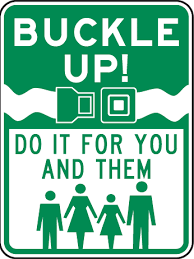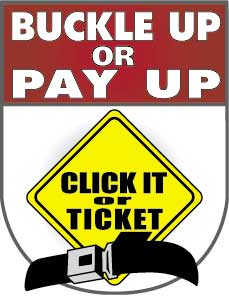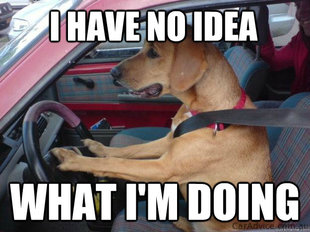Seat Belt Safety: Buckle Up the Right Way

Seat Belt Safety: Buckle Up the Right Way
Though everybody knows that they should wear their seat belt anytime they ride in a vehicle, even if they refuse to follow the law. NHTSA statistics show that about 13 percent of drivers do not use their seat belts when driving or riding as a passenger, even though it’s the law.
Even if drivers wear their seat belts all of the time, that does not necessarily mean they wear them correctly. Many drivers just buckle the belt and go on about their business without giving it a second thought, but ensuring you are wearing the seat belt the right way can make a huge difference in whether you will be properly protected in the event of an accident or not. The CDC states that proper seat belt usage can reduce serious accident-related injuries and death by about one half.
Breathe Easy Insurance Solutions provides the tips below to encourages you to buckle up the right way to keep you, your children and even your pets safe in the event of a crash.
Adult Seat Belt Safety
According to the NHTSA, adults should wear the seat belt harness across the chest and shoulder with minimal slack. This organization advises that you never wear the belt under the arm or behind the back. Improper usage can result in additional injuries during an accident. Strap the lap belt across the hips. Though air bags provide protection in a crash, they are no substitute for a properly adjusted seat belt. In a roll-over accident, the air bag will not keep you strapped in your seat.
Pregnant women should extend the lap belt under the baby bump and across the hips. The shoulder harness should be positioned across the chest and to the side of the belly, not over it. Keep the seat belt away from the neck area.

Seat Belt Safety for Kids
Children should always ride in an approved booster or car seat designed for their height and weight. If you have questions about car seats for kids, check the Parent’s Central site.
Keep your child in a booster seat until he is tall enough to properly wear a standard seat belt. Use the following conditions as guidelines for when your child is ready to move up to a standard belt.
– The child is able to keep his back against the standard car seat.
– The child is able to keep his knees bent over the edge of the seat.
– The child is able to keep his feet flat on the car’s floorboard.
The seat belt should fit over the child’s upper thigh and not across his stomach. The shoulder belt should fit across the chest and shoulder, not covering the face or neck. Double-check each child’s seat belt fit on every ride.
Pet Car Safety

Though many states do not have laws against transporting unsecured pets, veterinary experts recommend that you always restrain pets while they are with you in a vehicle. Pets moving about the vehicle unrestrained can distract you, and even pose physical impediments while you are driving. In the event of a crash, your pet can become a flying object, causing additional injury to the driver, passengers and the animal.
Public Transportation
Though state laws vary regarding the availability of seat belts in buses, taxis and limousines, always wear one if it is available.
Proper seat belt usage will protect you and your passengers in the event of an accident. Always buckle up, and buckle up the right way during each trip.
Breathe Easy Insurance Solutions offers affordable California SR22 insurance to drivers with less than perfect driving records. We understand that drivers need cheap SR22 insurance and our agents work day and night to find the lowest available rates. Call Breathe Easy Insurance Solutions at 866.822.7755 or complete our convenient contact form for your free, no obligation SR22 insurance quote today.
